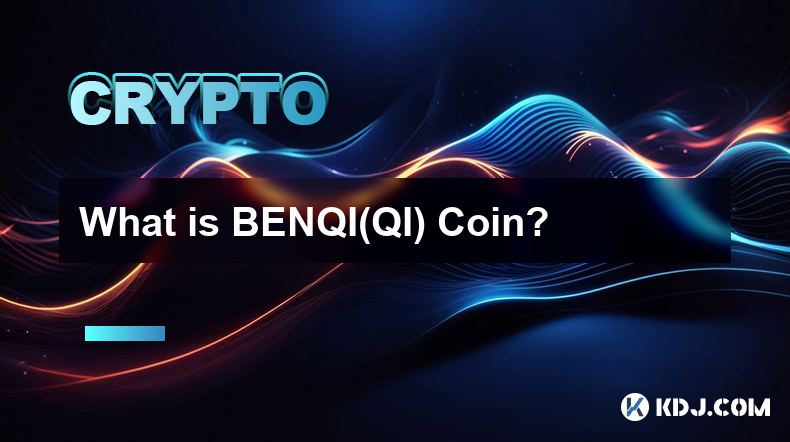-
 Bitcoin
Bitcoin $107,177.4639
-1.14% -
 Ethereum
Ethereum $2,491.2037
-0.61% -
 Tether USDt
Tether USDt $1.0002
0.01% -
 XRP
XRP $2.2429
1.26% -
 BNB
BNB $657.3356
0.28% -
 Solana
Solana $155.4695
1.22% -
 USDC
USDC $0.9999
0.00% -
 TRON
TRON $0.2807
1.56% -
 Dogecoin
Dogecoin $0.1651
-2.72% -
 Cardano
Cardano $0.5729
-1.27% -
 Hyperliquid
Hyperliquid $39.6884
-0.35% -
 Bitcoin Cash
Bitcoin Cash $507.4439
0.67% -
 Sui
Sui $2.7830
-4.69% -
 Chainlink
Chainlink $13.4283
-2.75% -
 UNUS SED LEO
UNUS SED LEO $9.0352
-0.48% -
 Avalanche
Avalanche $17.9622
-4.71% -
 Stellar
Stellar $0.2388
-1.01% -
 Toncoin
Toncoin $2.9152
-0.08% -
 Shiba Inu
Shiba Inu $0.0...01143
-4.04% -
 Litecoin
Litecoin $86.1768
-2.26% -
 Hedera
Hedera $0.1501
-1.98% -
 Monero
Monero $325.6175
4.22% -
 Polkadot
Polkadot $3.4095
-4.60% -
 Dai
Dai $1.0000
0.01% -
 Bitget Token
Bitget Token $4.5457
-1.85% -
 Ethena USDe
Ethena USDe $1.0002
-0.01% -
 Uniswap
Uniswap $7.1505
-3.76% -
 Aave
Aave $275.8099
-0.99% -
 Pepe
Pepe $0.0...09777
-6.00% -
 Pi
Pi $0.5071
-5.03%
What is BENQI(QI) Coin?
BENQI's QI token serves as a vital backbone, empowering holders with governance capabilities, liquidity incentives, and a gateway to cross-chain asset transfers.
Dec 20, 2024 at 05:15 pm

BENQI (QI) Coin: A Comprehensive Guide
Key Points
- BENQI is a decentralized lending protocol on the Avalanche blockchain.
- QI is the native token of the BENQI platform, used for governance, rewards, and liquidity incentives.
- BENQI offers various lending and borrowing options with competitive interest rates and low fees.
- QI token holders can participate in decision-making through voting on protocol proposals.
- BENQI rewards liquidity providers and lenders with QI tokens, incentivizing users to contribute to the platform's liquidity.
What is BENQI (QI) Coin?
BENQI is a fully decentralized lending platform built on the Avalanche blockchain. It allows users to borrow and lend crypto assets peer-to-peer, maximizing capital efficiency within the Avalanche ecosystem. BENQI aims to provide a seamless and user-friendly experience for both lenders and borrowers, offering competitive rates and minimizing risks.
How does BENQI Work?
Like other DeFi lending platforms, BENQI operates on a peer-to-peer model, connecting borrowers and lenders directly. Users can deposit crypto assets into liquidity pools, which borrowers can access by providing collateral. The borrowed funds can be used for various purposes, such as leveraging trades or providing liquidity to other platforms. One unique feature of BENQI is its "Smart Liquidity" algorithm, which dynamically adjusts liquidity provision to match demand, ensuring efficient interest rate determination and minimizing slippage during swaps.
QI Token
QI is the central token of the BENQI protocol, serving as a backbone for the platform's governance, incentive, and liquidity mechanisms. QI token holders have the power to participate in the governance of the protocol by discussing, proposing, and voting on protocol improvements, incentivizing community participation and the sustainability of the platform.
Benefits of Using BENQI
- Higher Yields for Lenders: BENQI's lending markets allow users to earn passive income on their crypto assets. With competitive interest rates and regular distribution of liquidity rewards, QI token holders can maximize their returns.
- Flexible Borrowing Options: Borrowers on BENQI have access to various assets at competitive interest rates. They can choose between fixed and variable interest rates, depending on their risk tolerance and liquidity needs.
- Cross-chain Compatibility: BENQI is built on Avalanche's cross-chain interoperability capabilities, enabling seamless connectivity with other blockchains. This allows users to transfer assets across chains for lending or borrowing opportunities.
- Low Fees and Transparency: BENQI's automated protocol manages lending and borrowing processes, minimizing operating costs and transaction fees for users. The platform's transparency ensures that all transactions are recorded on the Avalanche blockchain, ensuring trust and accountability.
Use Cases for Qi:
- Governance: Participate in BENQI protocol governance by voting and proposing changes.
- Incentives: Earn rewards for providing liquidity and lending crypto assets on the platform.
- Cross-chain Transfers: Facilitate seamless asset transfers between supported blockchains.
- Collaterals: Utilize QI as collaterals for borrowing assets on BENQI or other compatible platforms.
- Speculation: Trade QI for potential profit by leveraging its demand and price fluctuations in the market.
QI Token Distribution:
- Team and Advisors: 10% allocated to the BENQI founding team and key advisors
- Seed Round: 10% allocated to early investors participating in BENQI's seed funding round.
- Private Sale: 20% sold during private investment stages to institutional investors.
- Public Sale: 15% sold through a public token offering, providing access to retail investors.
- Ecosystem Growth: 25% reserved for future ecosystem development, including rewards programs, partnerships, and technology advancement.
- Liquidity Provision: 20% devoted to providing liquidity to DEXs (decentralized exchanges) and AMMs (automated market makers), ensuring market stability and trading depth.
Frequently Asked Questions (FAQs:)
What is Aave and how is it different from BENQI?
- Aave is another popular DeFi lending protocol, also operating on Ethereum, Polygon, and other blockchains. while BENQI specifically focuses on the Avalanche ecosystem. While both offer similar services, such as lending, borrowing, and liquidity provision, there may be differences in specific features, interest rates, and cross-chain compatibility.
Are there any fees associated with using BENQI?
- Yes, BENQI charges minimal transaction fees for using its platform. Fees vary depending on the specific transaction type (e.g., borrowing, lending, or swapping), and ensure that the protocol's operations are sustainable and secure.
What is the future roadmap for BENQI?
- BENQI's development team is actively working on multiple initiatives, including the integration of new assets, cross-chain lending, and lending-specific features. The platform's roadmap focuses on enhancing user experience, expanding liquidity pools, and exploring innovative solutions within the DeFi ecosystem.
Disclaimer:info@kdj.com
The information provided is not trading advice. kdj.com does not assume any responsibility for any investments made based on the information provided in this article. Cryptocurrencies are highly volatile and it is highly recommended that you invest with caution after thorough research!
If you believe that the content used on this website infringes your copyright, please contact us immediately (info@kdj.com) and we will delete it promptly.
- Ruvi AI: Is This Token Gem Delivering Real ROI?
- 2025-07-01 06:30:11
- Bitcoin Price, Robinhood, & BTC Momentum: What's the Deal?
- 2025-07-01 06:30:11
- PNG Membership Soars to Record High: A Deep Dive into Growth and What It Means
- 2025-07-01 06:50:11
- Bitcoin's Breakout to $110K: What's the Real Deal, New York?
- 2025-07-01 06:50:11
- Valhalla Beckons: Norse Mythology Meets Blockchain Gaming
- 2025-07-01 07:10:11
- Valhalla Beckons: Norse Mythology Meets Blockchain Gaming
- 2025-07-01 06:55:12
Related knowledge

How to customize USDT TRC20 mining fees? Flexible adjustment tutorial
Jun 13,2025 at 01:42am
Understanding USDT TRC20 Mining FeesMining fees on the TRON (TRC20) network are essential for processing transactions. Unlike Bitcoin or Ethereum, where miners directly validate transactions, TRON uses a delegated proof-of-stake (DPoS) mechanism. However, users still need to pay bandwidth and energy fees, which are collectively referred to as 'mining fe...

USDT TRC20 transaction is stuck? Solution summary
Jun 14,2025 at 11:15pm
Understanding USDT TRC20 TransactionsWhen users mention that a USDT TRC20 transaction is stuck, they typically refer to a situation where the transfer of Tether (USDT) on the TRON blockchain has not been confirmed for an extended period. This issue may arise due to various reasons such as network congestion, insufficient transaction fees, or wallet-rela...

How to cancel USDT TRC20 unconfirmed transactions? Operation guide
Jun 13,2025 at 11:01pm
Understanding USDT TRC20 Unconfirmed TransactionsWhen dealing with USDT TRC20 transactions, it’s crucial to understand what an unconfirmed transaction means. An unconfirmed transaction is one that has been broadcasted to the blockchain network but hasn’t yet been included in a block. This typically occurs due to low transaction fees or network congestio...

How to check USDT TRC20 balance? Introduction to multiple query methods
Jun 21,2025 at 02:42am
Understanding USDT TRC20 and Its ImportanceUSDT (Tether) is one of the most widely used stablecoins in the cryptocurrency market. It exists on multiple blockchain networks, including TRC20, which operates on the Tron (TRX) network. Checking your USDT TRC20 balance accurately is crucial for users who hold or transact with this asset. Whether you're sendi...

What to do if USDT TRC20 transfers are congested? Speed up trading skills
Jun 13,2025 at 09:56am
Understanding USDT TRC20 Transfer CongestionWhen transferring USDT TRC20, users may occasionally experience delays or congestion. This typically occurs due to network overload on the TRON blockchain, which hosts the TRC20 version of Tether. Unlike the ERC20 variant (which runs on Ethereum), TRC20 transactions are generally faster and cheaper, but during...

The relationship between USDT TRC20 and TRON chain: technical background analysis
Jun 12,2025 at 01:28pm
What is USDT TRC20?USDT TRC20 refers to the Tether (USDT) token issued on the TRON blockchain using the TRC-20 standard. Unlike the more commonly known ERC-20 version of USDT (which runs on Ethereum), the TRC-20 variant leverages the TRON network's infrastructure for faster and cheaper transactions. The emergence of this version came as part of Tether’s...

How to customize USDT TRC20 mining fees? Flexible adjustment tutorial
Jun 13,2025 at 01:42am
Understanding USDT TRC20 Mining FeesMining fees on the TRON (TRC20) network are essential for processing transactions. Unlike Bitcoin or Ethereum, where miners directly validate transactions, TRON uses a delegated proof-of-stake (DPoS) mechanism. However, users still need to pay bandwidth and energy fees, which are collectively referred to as 'mining fe...

USDT TRC20 transaction is stuck? Solution summary
Jun 14,2025 at 11:15pm
Understanding USDT TRC20 TransactionsWhen users mention that a USDT TRC20 transaction is stuck, they typically refer to a situation where the transfer of Tether (USDT) on the TRON blockchain has not been confirmed for an extended period. This issue may arise due to various reasons such as network congestion, insufficient transaction fees, or wallet-rela...

How to cancel USDT TRC20 unconfirmed transactions? Operation guide
Jun 13,2025 at 11:01pm
Understanding USDT TRC20 Unconfirmed TransactionsWhen dealing with USDT TRC20 transactions, it’s crucial to understand what an unconfirmed transaction means. An unconfirmed transaction is one that has been broadcasted to the blockchain network but hasn’t yet been included in a block. This typically occurs due to low transaction fees or network congestio...

How to check USDT TRC20 balance? Introduction to multiple query methods
Jun 21,2025 at 02:42am
Understanding USDT TRC20 and Its ImportanceUSDT (Tether) is one of the most widely used stablecoins in the cryptocurrency market. It exists on multiple blockchain networks, including TRC20, which operates on the Tron (TRX) network. Checking your USDT TRC20 balance accurately is crucial for users who hold or transact with this asset. Whether you're sendi...

What to do if USDT TRC20 transfers are congested? Speed up trading skills
Jun 13,2025 at 09:56am
Understanding USDT TRC20 Transfer CongestionWhen transferring USDT TRC20, users may occasionally experience delays or congestion. This typically occurs due to network overload on the TRON blockchain, which hosts the TRC20 version of Tether. Unlike the ERC20 variant (which runs on Ethereum), TRC20 transactions are generally faster and cheaper, but during...

The relationship between USDT TRC20 and TRON chain: technical background analysis
Jun 12,2025 at 01:28pm
What is USDT TRC20?USDT TRC20 refers to the Tether (USDT) token issued on the TRON blockchain using the TRC-20 standard. Unlike the more commonly known ERC-20 version of USDT (which runs on Ethereum), the TRC-20 variant leverages the TRON network's infrastructure for faster and cheaper transactions. The emergence of this version came as part of Tether’s...
See all articles

























































































